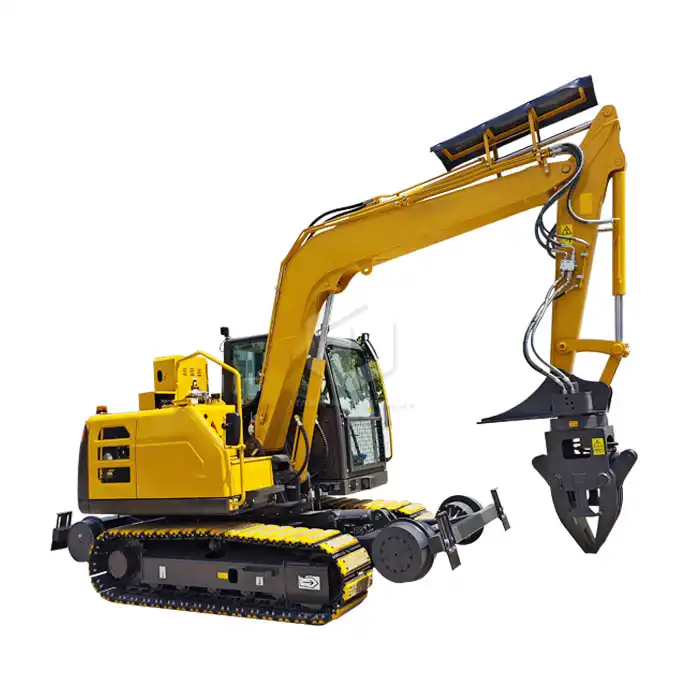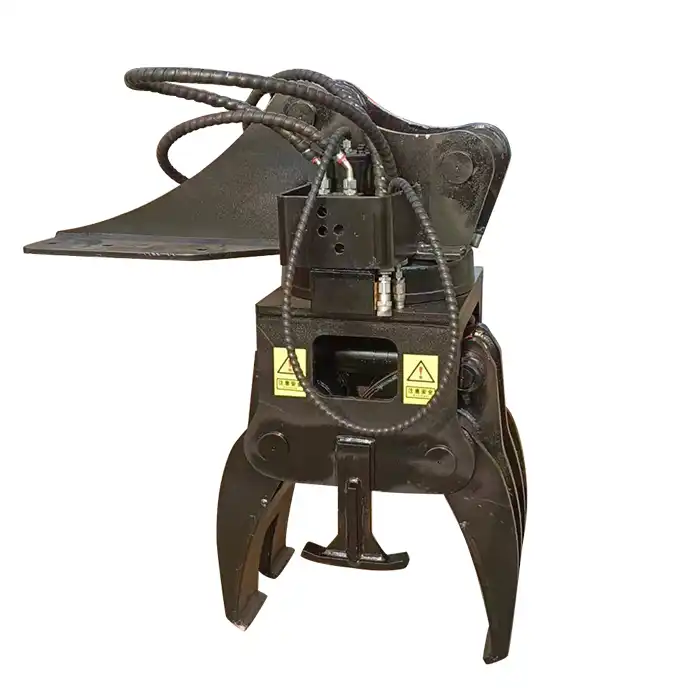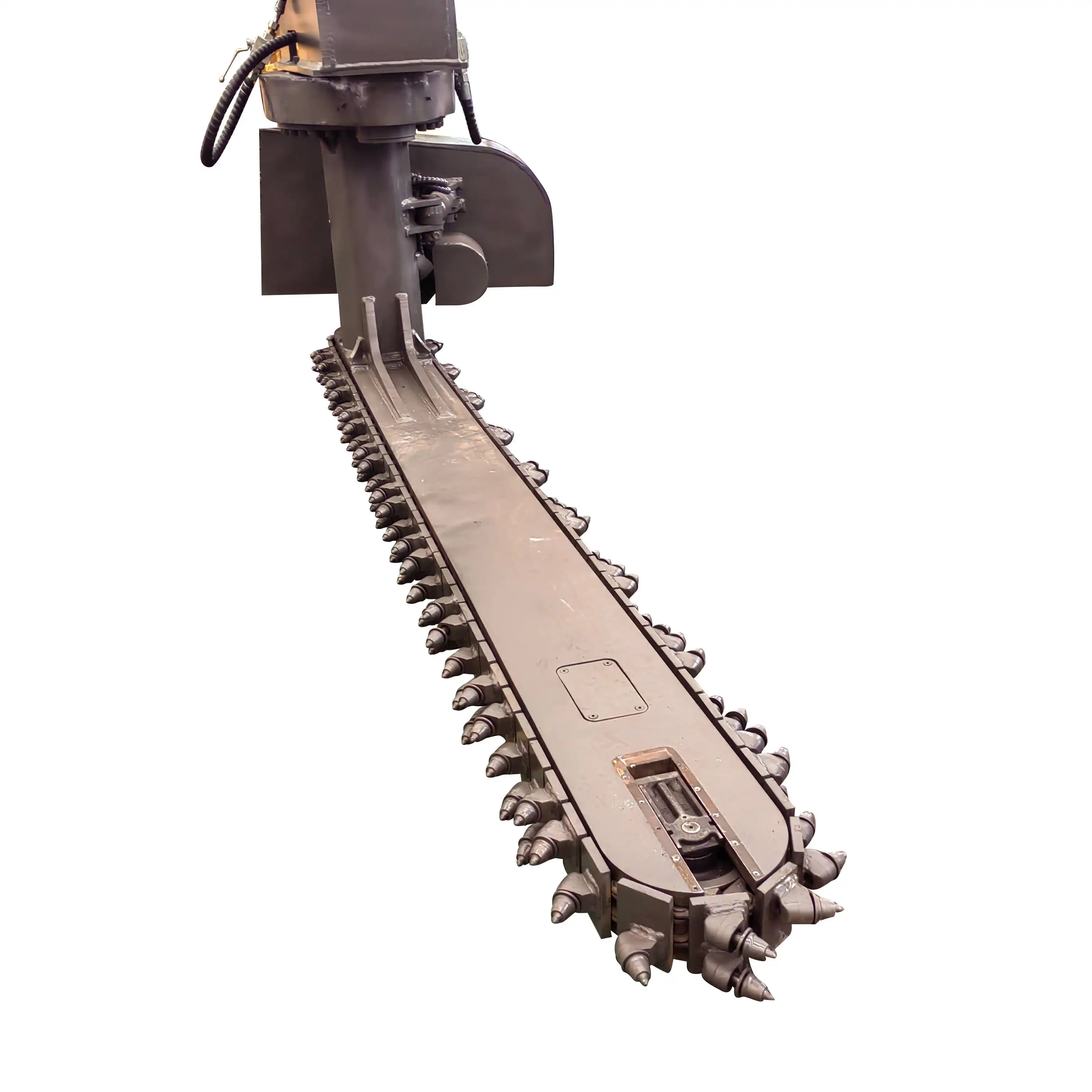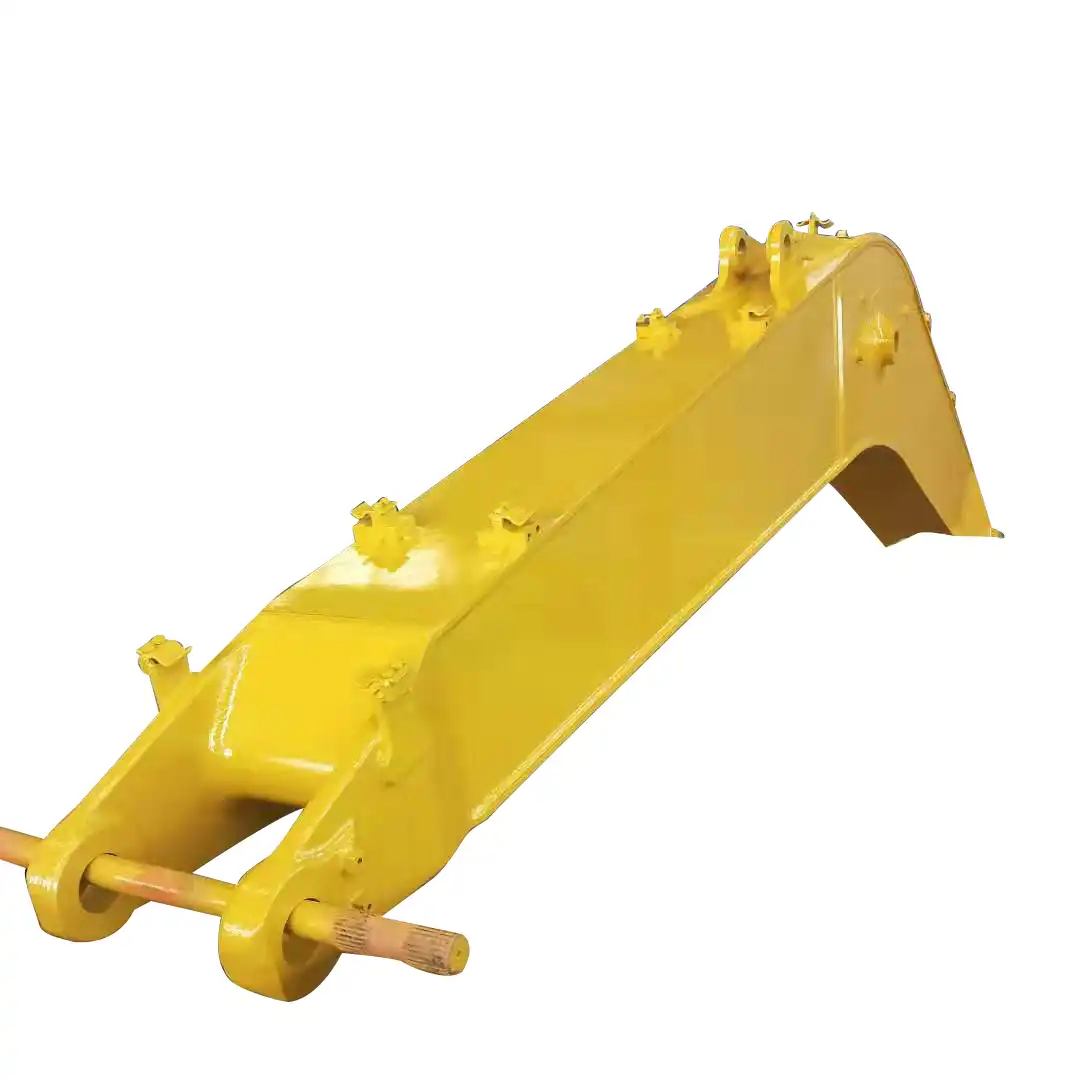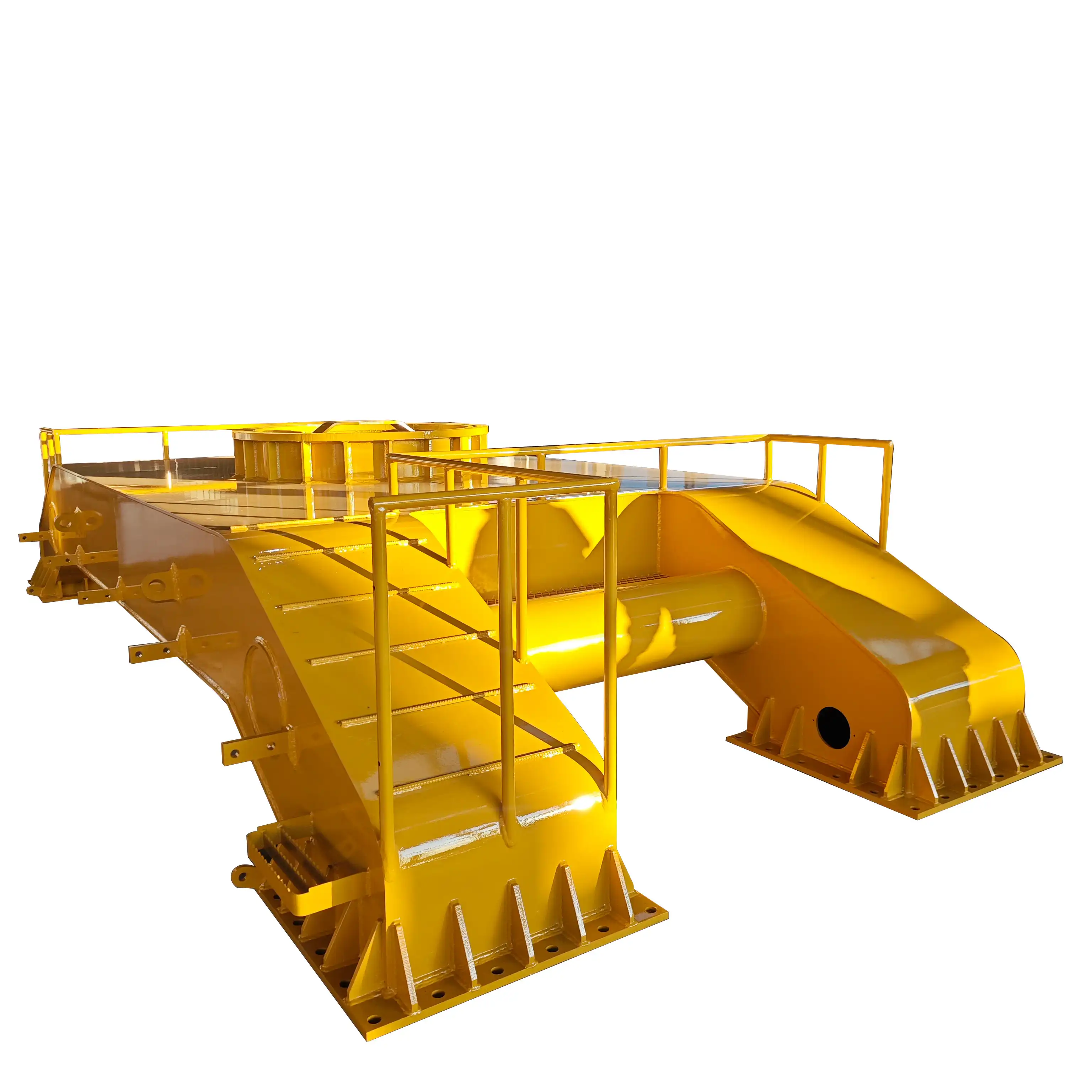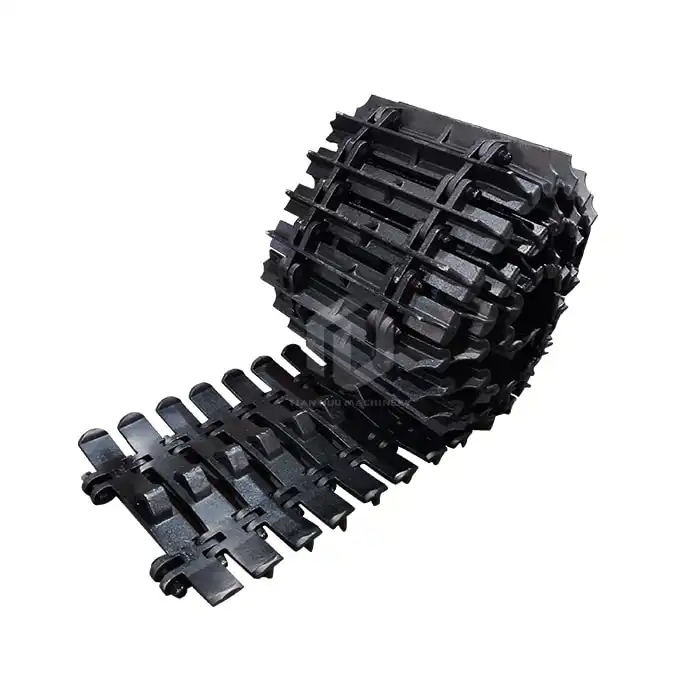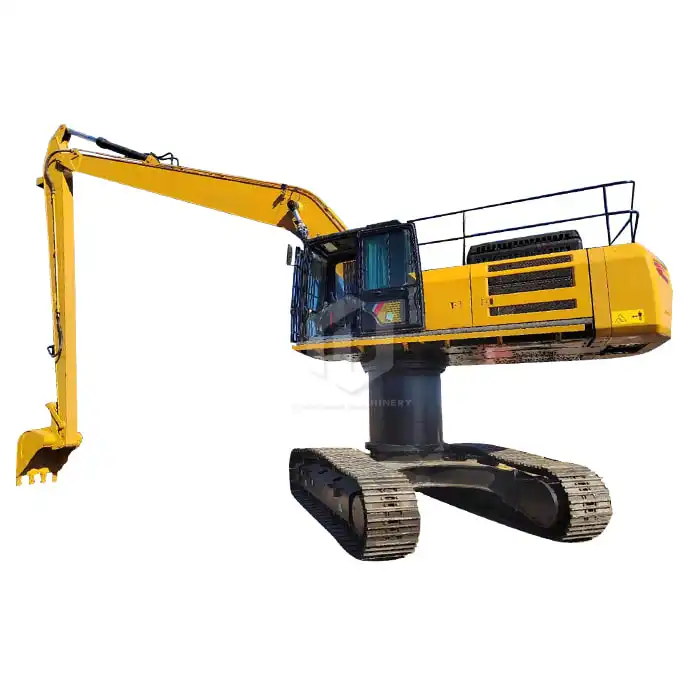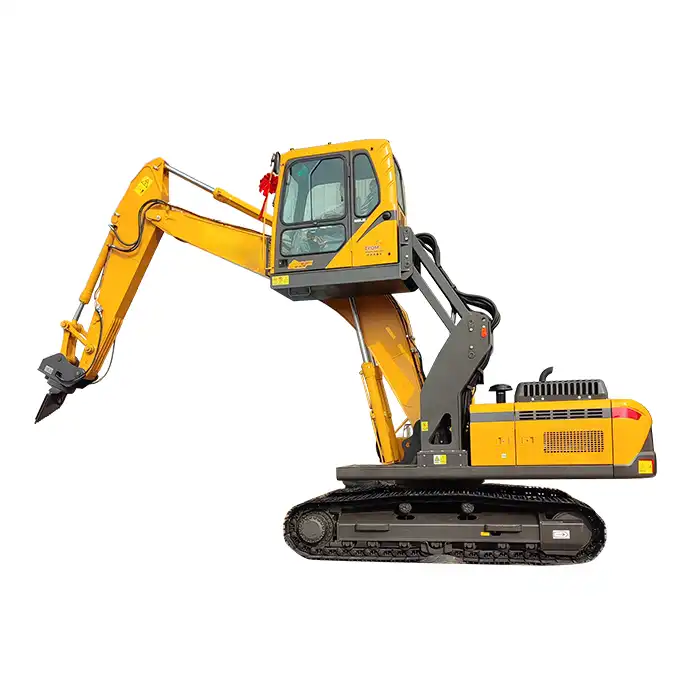What steel are excavator buckets made of?
Excavator buckets are typically manufactured using high-strength steel alloys designed to withstand the extreme forces and abrasive conditions encountered in heavy-duty digging and material handling operations. The specific steel used for buckets varies depending on the manufacturer and intended application, but generally includes a combination of carbon steel, manganese steel, and wear-resistant alloy steels. These materials are chosen for their exceptional durability, resistance to wear and tear, and ability to maintain structural integrity under high stress. The bucket's shell, teeth, and wear plates may each utilize different steel compositions to optimize performance and longevity in various working environments, from construction sites to mining operations.
Excavator buckets are typically made from high-strength steel alloys, including:
- Carbon steel (e.g., ASTM A36)
- Manganese steel (e.g., Hadfield steel)
- Wear-resistant alloy steels (e.g., AR400, AR500)
- High-tensile strength steels (e.g., S355, S690)
The exact composition varies based on manufacturer and intended use, balancing strength, wear resistance, and cost-effectiveness.

Made From High-Strength Steels
Carbon Steel: The Foundation
Carbon steel serves as the primary material for many excavator bucket designs due to its exceptional balance of strength, ductility, and cost-effectiveness. This versatile alloy ensures that buckets can withstand heavy loads, impact forces, and abrasive conditions commonly encountered in excavation work. Manufacturers frequently utilize grades such as ASTM A36 or equivalent standards, as these steels provide a reliable structural foundation. The carbon content in these materials generally ranges between 0.25% and 0.29%, striking an optimal balance between weldability, formability, and mechanical strength. This composition allows for efficient fabrication, including cutting, bending, and welding, while maintaining the necessary toughness to resist wear and deformation under demanding conditions.
Manganese Steel: Toughness Personified
For applications requiring exceptional wear resistance and impact toughness, manganese steel, also known as Hadfield steel, is a popular choice. This austenitic steel contains about 11-14% manganese and 1-1.4% carbon. Its unique property of work hardening under impact makes it ideal for high-wear areas of the bucket, such as the cutting edge and corner protectors. As the bucket operates, the manganese steel becomes harder and more resistant to abrasion, extending the service life of these critical components.
Alloy Steels: Tailored Performance
Various alloy steels are employed to enhance specific properties of the excavator bucket. For instance, chromium-molybdenum steels offer improved strength and heat resistance, making them suitable for buckets used in high-temperature environments or for handling hot materials. Nickel-chromium steels provide excellent corrosion resistance, beneficial for buckets operating in marine or highly corrosive conditions. These alloy steels allow manufacturers to tailor the bucket's performance to specific operational requirements, ensuring optimal durability and efficiency across diverse applications.
Bucket Shell Materials
Wear-Resistant Plate Steel
The shell of an excavator bucket, which forms its main body, is typically constructed from wear-resistant plate steel. Materials like AR400 or AR500 (Abrasion Resistant steel) are commonly used due to their exceptional hardness and ability to resist wear from abrasive materials. These steels have a Brinell hardness ranging from 400 to 500 HB, significantly higher than standard structural steels. The use of such materials ensures that the bucket can withstand the constant abrasion from digging and handling various materials, from soft soil to hard rock, without premature wear or failure.
High-Tensile Strength Steels
To withstand the immense forces exerted during digging operations, high-tensile strength steels are often incorporated into the bucket's design. Grades such as S355 or S690 provide excellent strength-to-weight ratios, allowing for robust construction without excessive weight. These steels typically have yield strengths ranging from 355 MPa to 690 MPa or higher, ensuring that the bucket maintains its structural integrity even under severe loading conditions. The use of high-tensile strength steels also allows for thinner wall sections, potentially increasing the bucket's capacity without compromising strength.
Composite Designs
Some advanced bucket designs incorporate composite materials or layered steel constructions to optimize performance. For example, a bucket might feature a wear-resistant outer layer bonded to a more ductile inner layer. This combination provides the abrasion resistance needed on the exterior while maintaining the toughness and impact resistance required to prevent cracking or structural failure. Such composite designs can significantly extend the bucket's service life, particularly in demanding applications like rock excavation or demolition work.
Bucket Teeth Materials
Through-Hardened Alloy Steel
Excavator bucket teeth, being the primary point of contact with the material being excavated, are subjected to extreme wear and impact. Through-hardened alloy steels are commonly used for tooth production. These steels are heat-treated to achieve a uniform hardness throughout their cross-section, typically ranging from 45 to 55 HRC (Rockwell C hardness). The high carbon content (often 0.3% to 0.5%) combined with alloying elements like chromium, nickel, and molybdenum provides an optimal balance of hardness for wear resistance and toughness to resist breakage under impact loads.
White Iron Castings
For applications involving highly abrasive materials, some manufacturers opt for white iron castings for bucket teeth. White iron, with its high carbon content (typically 2.5% to 3.5%) and the presence of chromium (often 15% to 28%), forms hard carbides that provide exceptional wear resistance. These materials can achieve hardness levels exceeding 60 HRC, making them ideal for extreme wear conditions. However, their brittleness necessitates careful design and application to prevent breakage under high impact loads.
Hardfacing and Overlays
To further enhance wear resistance and extend the life of bucket teeth, hardfacing techniques are often employed. This process involves applying a layer of wear-resistant material, such as tungsten carbide or chromium carbide, to the surface of the tooth. These overlays can significantly increase the hardness and abrasion resistance of the tooth surface, sometimes achieving hardness levels up to 70 HRC. The base material of the tooth remains relatively ductile, providing the necessary toughness, while the hardened surface layer bears the brunt of the abrasive wear, resulting in a longer-lasting and more efficient excavation tool.
【FAQ】
What factors influence the choice of steel for excavator buckets?
- The selection of steel for excavator buckets depends on several factors, including the intended application, operating environment, and expected lifespan. Manufacturers consider the type of material to be excavated (e.g., soil, rock, or abrasive materials), the frequency and intensity of use, and environmental conditions such as temperature and humidity. Cost considerations also play a role, as higher-performance steels often come with a higher price tag. The goal is to balance durability, performance, and cost-effectiveness to meet the specific needs of the end-user.
How do different steel compositions affect bucket performance?
- Different steel compositions can significantly impact an excavator bucket's performance. For instance, high-carbon steels offer increased hardness and wear resistance but may be more brittle and susceptible to cracking under impact. Manganese steels provide excellent work-hardening properties, making them ideal for high-impact applications. Alloy steels with chromium and molybdenum additions offer improved strength and heat resistance. The choice of steel composition directly affects the bucket's weight, durability, wear resistance, and overall performance in various digging conditions.
Are there any new materials being developed for excavator buckets?
- Research and development in materials science continue to yield new possibilities for excavator bucket construction. Some emerging trends include the use of ultra-high-strength steels with yield strengths exceeding 1000 MPa, which allow for lighter yet stronger bucket designs. Composite materials combining ceramics with metal matrices are being explored for extreme wear resistance in specialized applications. Additionally, advanced surface treatments and coatings are being developed to enhance the wear resistance of traditional steel alloys, potentially extending bucket lifespans and reducing maintenance costs.
Tiannuo: Excavator Buckets Supplier
We understand that your work is tough and your equipment needs to be tougher. That's why our excavator buckets are crafted from the finest high-strength wear-resistant steel. This premium material ensures that our buckets can withstand the harshest conditions and the most challenging tasks, providing you with long-lasting performance and minimal downtime.
Our range of excavator buckets is designed to cater to a wide variety of excavation needs. Whether you're working on a small-scale project or a massive construction site, we've got you covered. The capacity of our buckets spans from a compact 0.1 cubic meters all the way up to a robust 5.0 cubic meters. This extensive range allows you to choose the perfect bucket size for your specific job, ensuring maximum efficiency and productivity.
Compatibility is another key factor we prioritize. Our excavator buckets are designed to be compatible with a wide range of excavator models. No matter the brand or type of excavator you're using, we're confident that our buckets will fit seamlessly and enhance its functionality.
We also offer two attachment types to suit your preferences and the requirements of your job site. You can choose between pin-on attachment, which provides a secure and stable connection, or quick coupler attachment, allowing for easy and efficient bucket changes on the fly. This flexibility ensures that you can work efficiently and adapt to changing conditions without any hassle.
So, why settle for anything less when you can have the best? Tiannuo's excavator buckets are the ultimate solution for all your excavation needs. Don't miss out on the opportunity to upgrade your equipment and boost your productivity. Contact us today at arm@stnd-machinery.com, rich@stnd-machinery.com, or tn@stnd-machinery.com. Our dedicated team is ready to assist you and provide you with all the information you need to make the right choice for your business. Let Tiannuo be your trusted partner in excavation excellence.
References
1. Excavator Bucket Material Selection Guide, Journal of Construction Engineering, Vol. 45, No. 3, 2022.
2. Wear-Resistant Steels in Mining and Excavation Equipment, Materials Science and Technology, Vol. 38, Issue 2, 2021.
3. Advances in Excavator Bucket Design and Materials, International Journal of Heavy Equipment Research, Vol. 17, No.
4, 2023. 4. Comparative Study of Steel Alloys for Earthmoving Equipment, Journal of Materials Engineering and Performance, Vol. 30, Issue 8, 2022.
5. Impact of Material Selection on Excavator Bucket Lifespan, Construction and Building Materials, Vol. 315, 2022.
6. Innovations in Wear-Resistant Materials for Construction Equipment, Advanced Engineering Materials, Vol. 24, Issue 5, 2023.
About Author: Arm
Arm is a leading expert in the field of specialized construction and railway maintenance equipment, working at Tiannuo Company. Tiannuo specializes in manufacturing a wide range of products, including railway maintenance equipment like railway sleeper changing machines and screening machines, excavator modification equipment such as excavator lifting cabs, various engineering arms for excavators, excavator accessories like digging buckets, and engineering vehicle auxiliary equipment like loader buckets.

